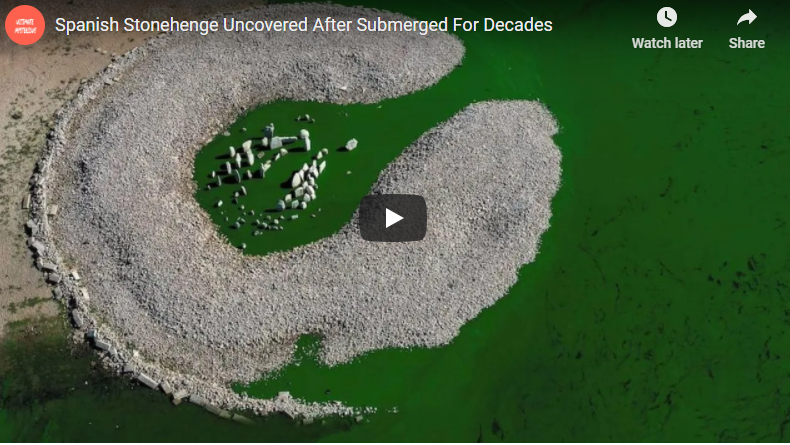Spanish Stonehenge uncovered after submerged for decades
According to archaeologists, the structure was probably used as a tomb, a site for trade or a space for religious rituals.
A 4-5,000-year-old monument, known as the Dolmen of Guadalperal, has reappeared in Spain after being submerged at the bottom of a reservoir for more than 50 years. The reappearance of the monument is due to very low water levels in Valdecañas Reservoir. Also known as Spanish Stonehenge, the monument is a large circle of about 150 standing stones. Some of these stones are over 6 feet tall and are arranged in a circle-like pattern.
One particularly large stone seems to mark the entrance that engraved with a symbol that could represent a snake or the Tagus River. According to archaeologists, the structure was probably used as a tomb, a site for trade or a space for religious rituals. The monument was discovered in 1926 during a research and excavation led by the German archaeologist.
However, it was submerged in 1963 after the Spanish government constructed the Valdecañas Reservoir to feed a hydroelectric dam. Unfortunately, inundation has damaged the monument by eroding the stones and their engravings. In 2019, the structure was seen fully for the first time in more than 50 years, when a NASA satellite photograph during a drought. However, the site is unlikely to be fully visible for a long time, as autumn and winter are the rainy season in the region and water levels will soon rise again.
Source : https://youtu.be/uOOVgVx6oVw



